-
 Bitcoin
Bitcoin $108,489.6704
1.13% -
 Ethereum
Ethereum $2,502.0528
2.92% -
 Tether USDt
Tether USDt $1.0002
0.00% -
 XRP
XRP $2.1941
0.51% -
 BNB
BNB $655.3375
1.00% -
 Solana
Solana $151.5977
1.27% -
 USDC
USDC $0.9999
0.00% -
 TRON
TRON $0.2768
0.32% -
 Dogecoin
Dogecoin $0.1676
2.86% -
 Cardano
Cardano $0.5675
0.98% -
 Hyperliquid
Hyperliquid $40.6109
7.48% -
 Bitcoin Cash
Bitcoin Cash $500.7746
2.09% -
 Sui
Sui $2.8328
2.03% -
 Chainlink
Chainlink $13.4452
1.26% -
 UNUS SED LEO
UNUS SED LEO $9.1623
0.39% -
 Avalanche
Avalanche $18.2267
2.24% -
 Stellar
Stellar $0.2382
0.00% -
 Toncoin
Toncoin $2.8885
1.68% -
 Shiba Inu
Shiba Inu $0.0...01159
0.91% -
 Litecoin
Litecoin $87.1827
0.88% -
 Hedera
Hedera $0.1511
2.90% -
 Monero
Monero $315.4992
-0.59% -
 Polkadot
Polkadot $3.4663
2.34% -
 Bitget Token
Bitget Token $4.6118
-0.65% -
 Dai
Dai $1.0000
-0.01% -
 Ethena USDe
Ethena USDe $1.0003
0.02% -
 Uniswap
Uniswap $7.2989
4.69% -
 Pepe
Pepe $0.0...01003
5.73% -
 Aave
Aave $275.5616
7.15% -
 Pi
Pi $0.5181
-2.49%
What is a Reflection Token?
Reflection tokens offer passive income via transaction fee redistribution to holders, but carry risks like rug pulls and price volatility; thorough research, including tokenomics and liquidity pool analysis, is crucial before investing.
Mar 13, 2025 at 05:20 pm
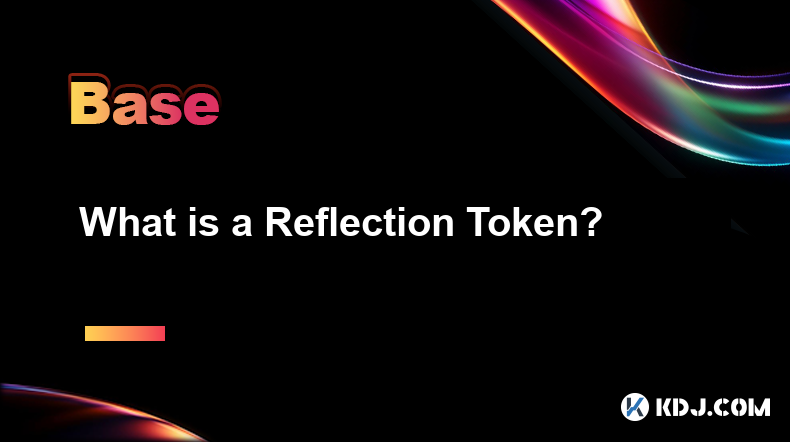
Key Points:
- Reflection tokens redistribute a portion of transaction fees to holders, rewarding passive income.
- The redistribution mechanism varies across different reflection tokens, impacting the reward amount.
- Understanding the tokenomics, including burn mechanisms and tax rates, is crucial before investing.
- Liquidity pools often play a key role in reflection token ecosystems.
- Risks associated with reflection tokens include rug pulls, impermanent loss, and price volatility.
What is a Reflection Token?
A reflection token is a type of cryptocurrency designed to reward its holders with passive income simply by owning the token. This passive income is generated through a redistribution mechanism that automatically sends a percentage of each transaction fee to existing token holders. This redistribution is typically proportional to the number of tokens held. The more tokens you hold, the more reflections you receive. This system incentivizes holders to hold onto their tokens long-term.
How do Reflection Tokens Work?
The core functionality of a reflection token revolves around its smart contract. This contract is programmed to automatically deduct a percentage from every buy and sell transaction. This deducted portion is then distributed amongst all token holders. The specific percentage varies significantly between different reflection tokens, ranging from a small fraction of a percent to several percent. Understanding the exact percentage is crucial for evaluating potential returns.
The Redistribution Mechanism:
The redistribution mechanism is the heart of a reflection token. It's often implemented using a tax on transactions. This tax is not a tax in the traditional sense but rather a programmed fee built into the token's smart contract. This fee is automatically collected and distributed amongst holders, making it a passive income stream. Different tokens use varying formulas for this distribution, influencing the rewards.
Tokenomics and Reflection Tokens:
Tokenomics, the economic principles governing a token's supply and distribution, are paramount for reflection tokens. A well-designed tokenomic model ensures sustainable growth and consistent reflections. Key aspects to consider include the total supply of tokens, the burn rate (if any), and the transaction tax rate. A high burn rate can reduce the circulating supply, potentially increasing the value of each token and reflections.
Liquidity Pools and Reflection Tokens:
Many reflection tokens are integrated with decentralized exchanges (DEXs) and utilize liquidity pools. These pools provide liquidity for trading and often play a crucial role in the token's ecosystem. A portion of the transaction fees might also be directed to these pools to maintain liquidity, further benefiting the token's stability. However, this also means that understanding the dynamics of these liquidity pools is important for assessing risk.
Risks Associated with Reflection Tokens:
While attractive due to their passive income potential, reflection tokens carry significant risks. One major risk is rug pulls, where developers abandon the project, leaving investors with worthless tokens. This risk is amplified by the often-anonymous nature of many cryptocurrency projects. Other risks include high volatility and impermanent loss if you provide liquidity to a liquidity pool. Thorough research and caution are essential.
Understanding the Smart Contract:
Before investing in any reflection token, it's crucial to thoroughly examine the underlying smart contract. This contract dictates the token's functionality and distribution mechanism. Look for audits from reputable security firms. A lack of transparency or an absence of an audit can be a red flag, indicating a higher risk of scams or vulnerabilities.
Choosing a Reflection Token:
Selecting a reflection token involves a multi-faceted assessment. Consider the project's whitepaper for a comprehensive overview. Look for a clear roadmap and a dedicated team. Analyze the tokenomics to understand the redistribution mechanism, tax rate, and burn rate. Assess the liquidity pool's depth and stability. Finally, gauge community engagement and developer activity.
Reflection Tokens and Passive Income:
The allure of reflection tokens lies in their potential for passive income. However, it's crucial to remember that this income is directly tied to the token's price. If the token's price falls, the value of your reflections decreases, even if you receive more tokens. This underscores the importance of diversifying your portfolio and not relying solely on reflection tokens for income.
Tax Implications of Reflection Tokens:
The tax implications of receiving reflections can vary depending on your jurisdiction. In many cases, the received tokens are considered taxable income. It's essential to consult with a tax professional to understand the specific tax implications in your region. Failure to report these gains could result in penalties.
Frequently Asked Questions:
Q: Are all reflection tokens scams?
A: No, not all reflection tokens are scams. However, the cryptocurrency space is rife with fraudulent projects, and reflection tokens are not immune. Due diligence is crucial before investing.
Q: How are reflections calculated?
A: The calculation method varies per token. Generally, it's proportional to the number of tokens held relative to the total supply. The exact formula is typically detailed in the project's whitepaper.
Q: Can I lose money with reflection tokens?
A: Yes, you can lose money. The price of the token can drop significantly, reducing the value of your holdings and reflections. Rug pulls are also a major risk.
Q: What are the best reflection tokens?
A: There's no definitive "best" reflection token. The performance of any token depends on various factors, including market conditions and project development. Thorough research is vital.
Q: How often are reflections distributed?
A: The frequency of reflection distribution varies depending on the token's smart contract. Some distribute reflections with every transaction, while others might do it periodically.
Q: Are reflection tokens a good long-term investment?
A: Whether reflection tokens are a good long-term investment depends entirely on the specific project, its sustainability, and market conditions. High risk and volatility are inherent.
Disclaimer:info@kdj.com
The information provided is not trading advice. kdj.com does not assume any responsibility for any investments made based on the information provided in this article. Cryptocurrencies are highly volatile and it is highly recommended that you invest with caution after thorough research!
If you believe that the content used on this website infringes your copyright, please contact us immediately (info@kdj.com) and we will delete it promptly.
- Bitcoin's Bumpy Ride: Profit-Taking Slows Momentum, What's Next?
- 2025-06-30 20:30:11
- Bitcoin's Price Stall: Decoding the ETF Inflows Mystery
- 2025-06-30 20:30:11
- Ripple XRP, Bitcoin, and Solaris Presale: What's the Buzz?
- 2025-06-30 18:50:11
- SpaceX, Mirror Tokens, and Investors: A Wild Ride to the Future?
- 2025-06-30 19:10:22
- Arbitrum (ARB) and Robinhood: Partnership Rumors Fuel Price Surge to $0.4289?
- 2025-06-30 19:10:22
- Jasmy Coin, Bitcoin, and the Rise of Solaris Presale: What's the Buzz?
- 2025-06-30 18:30:12
Related knowledge
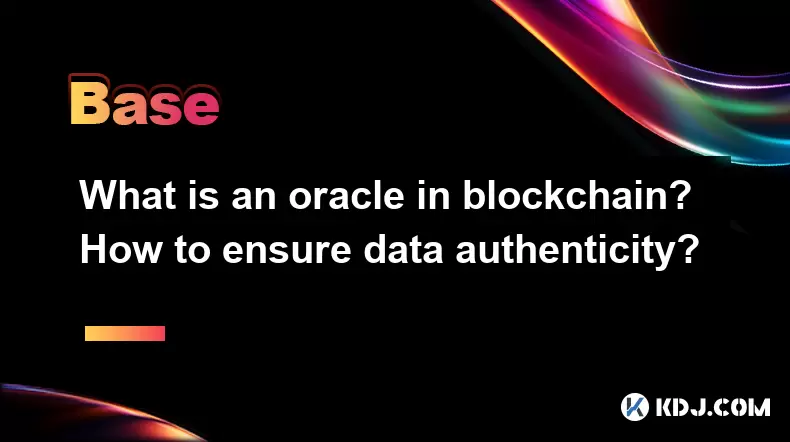
What is an oracle in blockchain? How to ensure data authenticity?
Jun 19,2025 at 08:49pm
Understanding the Role of an Oracle in BlockchainIn the context of blockchain technology, an oracle serves as a bridge between the blockchain and external data sources. While blockchains are inherently secure and decentralized, they cannot access real-world information on their own. Oracles enable smart contracts to interact with off-chain data such as ...
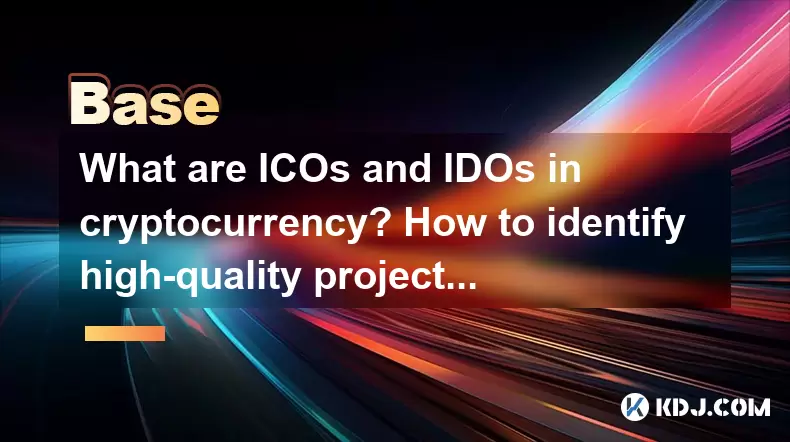
What are ICOs and IDOs in cryptocurrency? How to identify high-quality projects?
Jun 22,2025 at 11:49am
Understanding ICOs in CryptocurrencyInitial Coin Offerings (ICOs) are fundraising mechanisms used by cryptocurrency startups to raise capital for their projects. In an ICO, a company creates and sells its own tokens to investors in exchange for established cryptocurrencies like Bitcoin or Ethereum. The process typically involves the release of a whitepa...
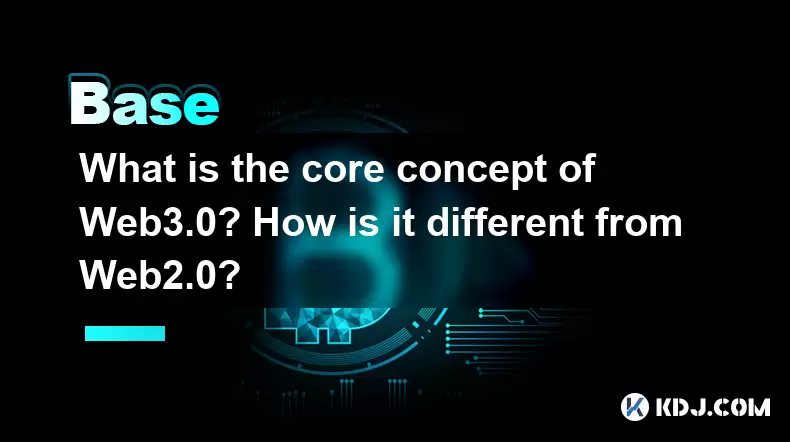
What is the core concept of Web3.0? How is it different from Web2.0?
Jun 21,2025 at 05:56pm
Decentralization as the Foundation of Web3.0The core concept of Web3.0 revolves around decentralization, which fundamentally challenges the centralized architecture of Web2.0. In Web3.0, control and ownership are distributed across a network rather than being held by a central authority or corporation. This is achieved primarily through blockchain techn...
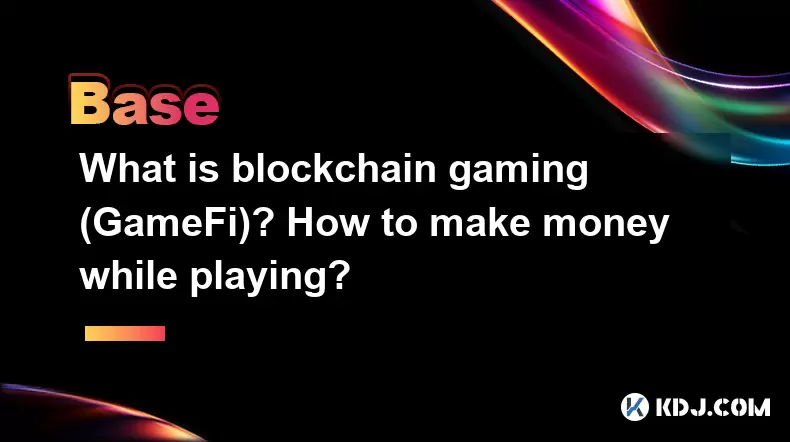
What is blockchain gaming (GameFi)? How to make money while playing?
Jun 20,2025 at 07:56am
Understanding Blockchain Gaming (GameFi)Blockchain gaming, often referred to as GameFi, is a fusion of blockchain technology and video games. It enables players to own in-game assets through non-fungible tokens (NFTs) and earn rewards via cryptocurrencies or token-based systems. Unlike traditional games where items are controlled by centralized develope...
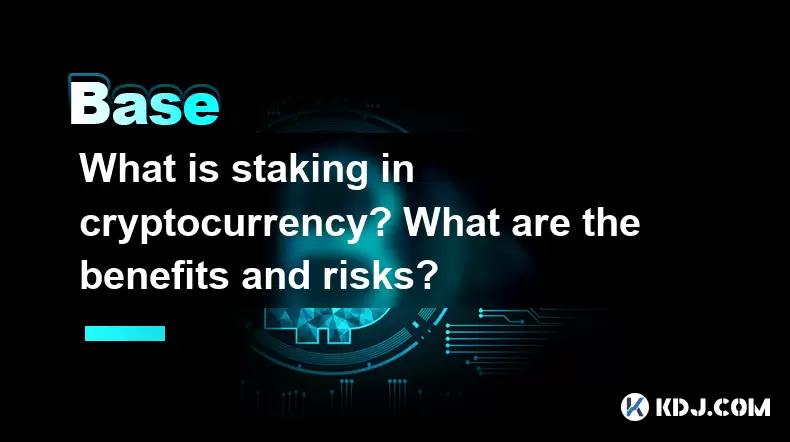
What is staking in cryptocurrency? What are the benefits and risks?
Jun 22,2025 at 10:01am
Understanding the Concept of Staking in CryptocurrencyStaking in cryptocurrency refers to the process of actively participating in transaction validation on a blockchain network that uses a Proof-of-Stake (PoS) consensus mechanism. Instead of miners competing to solve complex mathematical puzzles as in Proof-of-Work systems like Bitcoin, PoS blockchains...
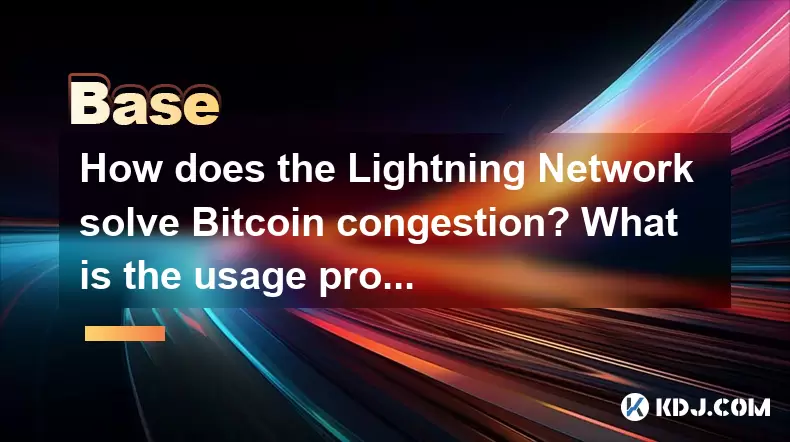
How does the Lightning Network solve Bitcoin congestion? What is the usage process?
Jun 23,2025 at 06:21pm
Understanding Bitcoin Network CongestionBitcoin, as a decentralized digital currency, operates on a blockchain that records every transaction in a public ledger. Each block has a limited size, typically 1 megabyte, which allows for only a certain number of transactions per second (TPS). When the number of transactions increases, the network becomes cong...

What is an oracle in blockchain? How to ensure data authenticity?
Jun 19,2025 at 08:49pm
Understanding the Role of an Oracle in BlockchainIn the context of blockchain technology, an oracle serves as a bridge between the blockchain and external data sources. While blockchains are inherently secure and decentralized, they cannot access real-world information on their own. Oracles enable smart contracts to interact with off-chain data such as ...

What are ICOs and IDOs in cryptocurrency? How to identify high-quality projects?
Jun 22,2025 at 11:49am
Understanding ICOs in CryptocurrencyInitial Coin Offerings (ICOs) are fundraising mechanisms used by cryptocurrency startups to raise capital for their projects. In an ICO, a company creates and sells its own tokens to investors in exchange for established cryptocurrencies like Bitcoin or Ethereum. The process typically involves the release of a whitepa...

What is the core concept of Web3.0? How is it different from Web2.0?
Jun 21,2025 at 05:56pm
Decentralization as the Foundation of Web3.0The core concept of Web3.0 revolves around decentralization, which fundamentally challenges the centralized architecture of Web2.0. In Web3.0, control and ownership are distributed across a network rather than being held by a central authority or corporation. This is achieved primarily through blockchain techn...

What is blockchain gaming (GameFi)? How to make money while playing?
Jun 20,2025 at 07:56am
Understanding Blockchain Gaming (GameFi)Blockchain gaming, often referred to as GameFi, is a fusion of blockchain technology and video games. It enables players to own in-game assets through non-fungible tokens (NFTs) and earn rewards via cryptocurrencies or token-based systems. Unlike traditional games where items are controlled by centralized develope...

What is staking in cryptocurrency? What are the benefits and risks?
Jun 22,2025 at 10:01am
Understanding the Concept of Staking in CryptocurrencyStaking in cryptocurrency refers to the process of actively participating in transaction validation on a blockchain network that uses a Proof-of-Stake (PoS) consensus mechanism. Instead of miners competing to solve complex mathematical puzzles as in Proof-of-Work systems like Bitcoin, PoS blockchains...

How does the Lightning Network solve Bitcoin congestion? What is the usage process?
Jun 23,2025 at 06:21pm
Understanding Bitcoin Network CongestionBitcoin, as a decentralized digital currency, operates on a blockchain that records every transaction in a public ledger. Each block has a limited size, typically 1 megabyte, which allows for only a certain number of transactions per second (TPS). When the number of transactions increases, the network becomes cong...
See all articles

























































































